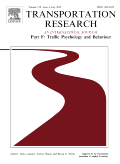
TRANSPORTATION RESEARCH PART F-TRAFFIC PSYCHOLOGY AND BEHAVIOUR
Scope & Guideline
Unraveling Human Behavior in Transportation Dynamics
Introduction
Aims and Scopes
- Traffic Safety and Human Behavior:
The journal emphasizes research on the psychological factors that impact driver behavior, including risk perception, decision-making in critical situations, and responses to automated vehicle technologies. - Interaction between Drivers and Automated Systems:
A key focus is on how drivers interact with automated vehicles and driver assistance systems, exploring factors that influence trust, acceptance, and the transition between manual and automated driving. - Vulnerable Road Users:
Research on the behavior and safety of vulnerable road users such as pedestrians, cyclists, and motorcyclists is prominent, highlighting their interactions with vehicles and the impact of infrastructure on their safety. - Cognitive and Emotional Factors in Driving:
The journal investigates how cognitive load, emotional states, and individual differences affect driving performance and risk-taking behavior, providing insights into driver distraction and fatigue. - Sustainable Transportation:
There is a growing interest in understanding the psychological and behavioral aspects of sustainable transportation choices, including public transport use, cycling, and the adoption of electric vehicles. - Socio-Cultural Influences on Driving Behavior:
Research includes the influence of cultural, social, and demographic factors on driving behavior, safety perceptions, and the acceptance of new transportation technologies.
Trending and Emerging
- Impact of Automation on Driver Behavior:
There is a significant rise in research exploring how automation affects driver behavior, focusing on trust, takeover performance, and the psychological implications of transitioning between automated and manual control. - Psychological Factors in Vulnerable Road User Safety:
Increased attention is being paid to the safety and behavior of vulnerable road users, with studies examining interactions between pedestrians, cyclists, and automated vehicles in urban environments. - Mental Health and Driving:
Emerging research explores the intersection of mental health and driving behavior, including the effects of anxiety, stress, and cognitive load on driving performance and decision-making. - Gamification and Behavioral Interventions:
The use of gamification and other innovative behavioral interventions to promote safe driving practices and encourage sustainable transportation choices is gaining traction. - Sustainability and Eco-Driving:
There is a growing interest in understanding the psychological aspects of eco-driving and sustainable transportation behaviors, reflecting broader societal concerns about climate change. - User Experience with Transportation Technologies:
Research focusing on user experiences with new transportation technologies, including automated vehicles and driver assistance systems, is increasingly prevalent, emphasizing user acceptance and interaction design.
Declining or Waning
- Traditional Traffic Engineering Solutions:
Research focusing solely on traditional traffic engineering methods without considering psychological or behavioral insights has decreased, as the field increasingly emphasizes human factors. - Static Safety Interventions:
There is a noticeable decline in studies centered on static safety measures (like speed bumps or signage) without integrating behavioral insights or technological advancements in traffic management. - Generalized Risk Perception Studies:
The focus on generalized studies of risk perception without specific contextual applications (like automated vehicles or specific demographics) is less frequent, as the field moves towards more nuanced analyses. - Single-Factor Explanations for Driving Behavior:
Research that relies on single-factor explanations for driving behavior (e.g., solely focusing on demographics) is waning, with a shift towards more complex, multifactorial approaches that consider psychological, social, and environmental influences.
Similar Journals
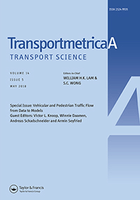
Transportmetrica A-Transport Science
Navigating the Complexities of Modern Transport SystemsTransportmetrica A-Transport Science, published by Taylor & Francis Ltd, is an influential journal at the forefront of transport science research. With an ISSN of 2324-9935 and an E-ISSN of 2324-9943, the journal spans a diverse range of topics within the field of transportation and engineering. Since its inception in 2013, it has aimed to provide a platform for high-quality, innovative research, reflecting significant advancements and challenges in transportation systems. Recognized for its academic rigor, it has achieved a Q1 ranking in Engineering (miscellaneous) and a Q2 ranking in Transportation for 2023, reflecting its impact and relevance in these fields. With impressive Scopus rankings of #31/307 in General Engineering and #31/141 in Transportation, the journal is positioned in the top 90th and 78th percentiles respectively. Though not an open-access publication, Transportmetrica A promotes accessibility of knowledge and strives to foster discourse among researchers, professionals, and students alike, making it an essential resource for anyone invested in the future of transportation science.
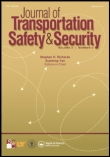
Journal of Transportation Safety & Security
Driving the conversation on transportation safety.The Journal of Transportation Safety & Security (ISSN: 1943-9962; E-ISSN: 1943-9970), published by Taylor & Francis Inc, stands as a pivotal resource for professionals and researchers in the fields of safety research and transportation. Since its inception in 2009, this journal has delivered rigorous peer-reviewed articles that explore critical issues relating to safety and security within the transportation sector. With an impressive impact factor reflecting its scholarly significance—ranking Q1 in Safety Research and Q2 in Transportation as of 2023—this journal occupies a unique position in the academic landscape, encouraging innovation and collaboration among researchers dedicated to improving safety measures. The Scopus rankings further affirm its status, placing it 17th out of 109 in Safety Research and 49th out of 141 in Transportation. Readers can expect contemporary discussions and comprehensive reviews tailored to both practitioners and academics alike, effectively bridging the gap between theory and application. Explore the Journal of Transportation Safety & Security to contribute to a safer and more secure transportation environment.

Automotive Innovation
Transforming Ideas into Automotive AdvancementsAutomotive Innovation is a leading academic journal dedicated to the advancements and transformative trends in the field of automotive engineering. Published by SpringerNature, this esteemed journal boasts an impressive Q1 ranking in Automotive Engineering for 2023, reflecting its high impact and relevance with a rank of #17 out of 125 in the Scopus database, placing it in the 86th percentile. Focused on publishing cutting-edge research from 2018 to 2024, it serves as an essential platform for researchers, professionals, and students interested in exploring the latest innovations, technologies, and practices in automotive design, manufacturing, and sustainability. Though not an open access journal, its commitment to advancing knowledge in automotive engineering makes it an invaluable resource for anyone invested in the future of transportation. For further insights and research findings, the journal can be accessed at its editorial office located in the United States.
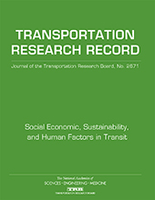
TRANSPORTATION RESEARCH RECORD
Transforming Challenges into Engineering ExcellenceTRANSPORTATION RESEARCH RECORD is a premier journal published by SAGE PUBLICATIONS INC, focusing on the latest advancements and research in the fields of civil and structural engineering as well as mechanical engineering. Since its inception in 1974, this journal has become an essential platform for disseminating innovative methodologies, case studies, and comprehensive reviews that address critical issues in transportation systems and infrastructure. With a respectable Q2 ranking in both engineering categories as of 2023, it solidifies its position among reputable publications, catering to a diverse range of scholars, professionals, and students. The journal not only facilitates access to high-quality research but also plays a pivotal role in shaping policy and practice through its robust findings. For those invested in the engineering disciplines, particularly within the transportation domain, TRANSPORTATION RESEARCH RECORD is an invaluable resource, with a wide array of topics covered throughout converged years, from 1974 to 1990, and from 1993 to 2024, ensuring a comprehensive exploration of historical and contemporary challenges in transportation.
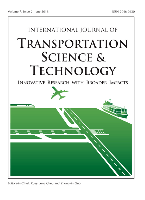
International Journal of Transportation Science and Technology
Elevating the standards of transportation technology and policy.The International Journal of Transportation Science and Technology, published by KEAI PUBLISHING LTD, stands as a pivotal resource in the fields of transportation, automotive engineering, civil and structural engineering, and policy management. With a robust Open Access model since its inception in 2012, this journal provides unparalleled visibility to research that impacts real-world transportation systems and infrastructure. The journal proudly holds a Q1 category ranking in crucial engineering fields, reflecting its high impact and quality of published research. Its diverse scope and comprehensive coverage make it an essential platform for researchers, professionals, and students alike who are eager to contribute to the advancement of transportation science and technology. With impressive Scopus rankings underscoring its relevance in environmental science and social sciences related to transport, the International Journal of Transportation Science and Technology continues to foster innovation and influence policy development globally, addressing the challenges of modern transportation systems.
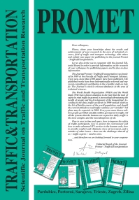
Promet-Traffic & Transportation
Innovating Solutions for Modern Mobility ChallengesPromet-Traffic & Transportation is a premier open-access journal published by SVEUCILISTE U ZAGREBU, FAKULTET PROMETNIH ZNANOSTI, dedicated to advancing the fields of traffic and transportation engineering. Since its inception in 2001, the journal has played a crucial role in disseminating innovative research and best practices within its scope, which embraces civil and structural engineering, urban studies, and various engineering disciplines. With a Q3 ranking in multiple categories as of 2023, including Civil and Structural Engineering and Ocean Engineering, Promet is positioned to provide valuable insights into contemporary challenges and solutions in transportation systems. Open-access since 2013, the journal ensures that all published articles are freely available to researchers, practitioners, and students globally, fostering a collaborative environment for knowledge exchange. Based in Croatia, it serves as an essential platform for interdisciplinary studies that influence the future of traffic and transportation policies and practices.

International Journal of Intelligent Transportation Systems Research
Optimizing Transportation Networks for a Smarter TomorrowInternational Journal of Intelligent Transportation Systems Research, published by Springer, stands as a premier platform for disseminating cutting-edge research in intelligent transportation systems (ITS). Established in 2010, this journal has made significant strides in addressing the complexities and innovations within the realm of transportation engineering, automotive technology, control systems, and information systems, reflected in its impressive categorization across diverse engineering and applied mathematics disciplines with notable rankings in Q2 and Q3 quartiles. With a steadfast commitment to advancing knowledge and fostering discussions that bridge academia and industry, the journal welcomes high-quality research articles, reviews, and case studies that explore emerging trends, technologies, and methodologies shaping the transport sector. Researchers, professionals, and students alike will find a wealth of insights aimed at optimizing operational efficiencies and enhancing safety and sustainability in transportation networks. As of 2023, the journal continues to thrive, seeking to compile contributions that align with its mission of improving transportation systems globally.
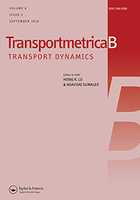
Transportmetrica B-Transport Dynamics
Transforming Transportation Through Cutting-edge ResearchTransportmetrica B: Transport Dynamics is a premier academic journal published by Taylor & Francis Ltd, focusing on innovative research in the fields of transportation dynamics, modeling, and simulation. Established in 2013 and running through 2024, this journal holds a prestigious Q1 ranking in Modeling and Simulation, Software, and Transportation categories, reflecting its commitment to high-quality scholarship. With an impactful presence, evidenced by its Scopus rankings—73rd in Mathematics, 57th in Social Sciences, and 174th in Computer Science—Transportmetrica B serves as a critical platform for researchers, professionals, and students seeking to explore and disseminate groundbreaking findings in transport dynamics. The journal is accessible via open access options, ensuring that its valuable insights reach a global audience. As the field of transport continues to evolve, Transportmetrica B remains at the forefront, championing extensive research and development that address the challenges of modern transportation systems.
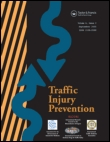
Traffic Injury Prevention
Elevating research to protect every road user.Traffic Injury Prevention is a premier academic journal dedicated to disseminating critical research and innovative findings in the field of injury prevention, with a particular focus on traffic-related incidents. Published by Taylor & Francis Inc, this journal serves as a vital platform for communication among researchers, policymakers, and practitioners in public health, safety research, and environmental health. With an impressive impact factor and a robust ranking—earning a place in the Q2 quartile for Public Health, Environmental and Occupational Health, and Q1 for Safety Research—it reflects the journal's significant contributions to advancing knowledge and practice in reducing traffic injuries and fatalities. Since its inception in 2002, Traffic Injury Prevention has highlighted pivotal studies and interventions that inform best practices, encouraging a safer environment for all road users. The journal is essential reading for anyone involved in traffic safety, from researchers and public health officials to educators and students. As we look towards the future, contributions to this journal not only inform current practices but also shape ongoing research, policy, and education aimed at preventing traffic injuries worldwide.
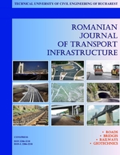
Romanian Journal of Transport Infrastructure
Elevating Standards in Transport Infrastructure ScholarshipWelcome to the Romanian Journal of Transport Infrastructure, a premier publication dedicated to advancing knowledge in the field of transport infrastructure engineering and management. Published by SCIENDO, this open access journal has been committed to sharing significant research and developments since 2012, ensuring that vital information is readily available to the global academic community. The journal's ISSN is 2286-2218, and it provides a platform for researchers, professionals, and students to collaborate and disseminate findings related to transport systems planning, design, construction, and maintenance. The Romanian Journal of Transport Infrastructure aims not only to contribute to scholarly literature but also to influence policy and practice related to transportation challenges. Our editorial team strives to maintain high standards of academic rigor and relevance, making this journal an essential resource for anyone involved in the transport infrastructure sector.